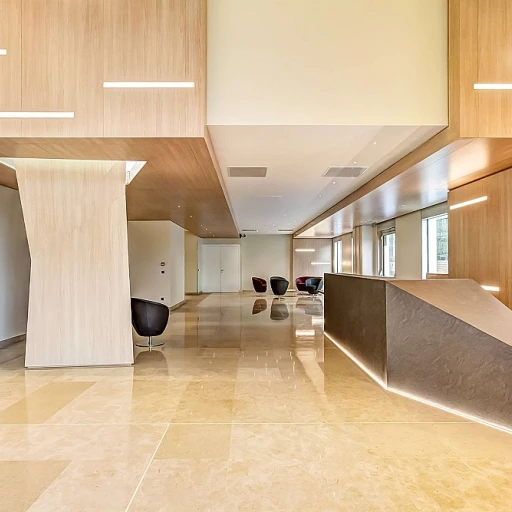
Understanding the core principles of responsive design
What Makes a Design Truly Responsive?
Responsive design is more than just making a website look good on different screens. At its core, it’s about creating digital experiences that adapt seamlessly to any device, whether it’s a smartphone, tablet, laptop, or desktop. The goal is to ensure users can interact with content comfortably, no matter how they access it. This approach is now a standard in modern web development, as users expect consistency and usability everywhere.
Key Elements of Responsive Design
- Fluid Grids: Layouts are built using relative units like percentages, rather than fixed pixels. This allows content to scale smoothly as the screen size changes.
- Flexible Images: Images and media adjust automatically to fit within their containing elements, preventing overflow or awkward cropping.
- Media Queries: CSS rules that apply different styles based on device characteristics, such as screen width or orientation. This enables tailored experiences for each device.
- Mobile-First Approach: Designing for smaller screens first, then scaling up for larger devices. This ensures essential content and functionality are prioritized.
How Responsive Design Shapes User Experience
By embracing these principles, designers can deliver interfaces that feel natural and intuitive across all platforms. This not only improves usability but also supports accessibility and inclusivity. As digital habits evolve, responsive design remains a crucial foundation for any project aiming to meet user expectations.
For a deeper dive into the importance of responsive design in web and mobile development, check out this comprehensive guide on responsive design success.
Why responsive design is essential for user experience
The impact of device diversity on user expectations
Today, people access websites from a wide range of devices, including smartphones, tablets, laptops, and desktops. This diversity has transformed user expectations. Visitors now anticipate a seamless experience, regardless of screen size or platform. If a site fails to adapt, users may quickly leave, leading to higher bounce rates and missed opportunities.
How responsive design shapes user satisfaction
Responsive design ensures that content, navigation, and interactive elements adjust fluidly to different devices. This adaptability not only improves readability but also supports intuitive interactions. When users can easily find information and complete tasks without unnecessary zooming or scrolling, their satisfaction increases. According to industry research, sites optimized for all devices tend to see better engagement and longer session durations.
Accessibility and inclusivity through flexibility
Flexible layouts and scalable elements are not just about aesthetics. They play a crucial role in accessibility, making content usable for people with various abilities and preferences. Responsive design helps ensure that everyone, regardless of device or context, can access essential features and information.
- Improved navigation on small screens
- Consistent branding and messaging
- Faster loading times and better performance
For more insights on how responsive design drives web and mobile performance, explore this in-depth article on responsive design as a key to web and mobile performance.
Common challenges in implementing responsive design
Addressing Device Diversity and Consistency
One of the main hurdles in responsive design is the sheer variety of devices and screen sizes. From compact smartphones to large desktop monitors, ensuring a consistent user experience across all platforms is complex. Designers must account for different resolutions, aspect ratios, and even device orientations. This diversity can lead to unpredictable layouts if not managed carefully.
Performance and Loading Speed
Responsive interfaces often require flexible images, scalable typography, and adaptable grids. However, loading large images or unnecessary resources can slow down performance, especially on mobile networks. Optimizing assets and prioritizing content are essential to maintain fast load times and smooth interactions. Slow performance can quickly frustrate users and increase bounce rates.
Navigation and Touch Interactions
Designing navigation that works seamlessly on both touch and non-touch devices is another challenge. Menus that are easy to use with a mouse may not translate well to touchscreens. Ensuring buttons are large enough to tap and that interactive elements are spaced appropriately helps avoid user errors and enhances accessibility.
Testing Across Multiple Environments
Testing responsive layouts is more demanding than traditional design. It requires checking interfaces on various devices, browsers, and operating systems. Automated tools can help, but manual testing remains crucial for catching subtle issues. For more insights on optimizing user experience in diverse digital environments, you can read about enhancing user experience in Woodstock's digital landscape.
- Device fragmentation complicates layout consistency
- Performance optimization is critical for mobile users
- Navigation must adapt to both touch and traditional inputs
- Comprehensive testing is necessary for reliability
Best practices for creating flexible layouts
Building Layouts That Adapt Seamlessly
Creating flexible layouts is at the heart of responsive design. The goal is to ensure that your website or application looks and functions well on any device, from large desktop monitors to compact smartphones. This approach not only enhances usability but also supports accessibility and performance.
Key Techniques for Flexible Layouts
- Fluid Grids: Instead of fixed pixel values, use relative units like percentages or
emfor widths. This allows content to resize smoothly as the viewport changes. - Flexible Images and Media: Apply CSS rules such as
max-width: 100%;to images and videos. This ensures media scales within its container without overflowing or distorting. - Media Queries: Use CSS media queries to apply different styles based on device characteristics like screen width, orientation, or resolution. This enables tailored experiences for each device type.
- Mobile-First Approach: Start designing for the smallest screen size, then progressively enhance the layout for larger screens. This method prioritizes essential content and performance.
Practical Tips for Designers
- Maintain a consistent grid system to align elements and create visual harmony.
- Test your layouts with real content, not just placeholders, to identify potential issues early.
- Consider touch targets and spacing for mobile users to improve usability.
- Leverage CSS frameworks or design systems that support responsive design principles for faster development and consistency.
By applying these best practices, you can create layouts that not only look good but also deliver a smooth experience across all devices. This flexibility is essential for meeting user expectations and supporting business goals in today’s multi-device world.
Tools and frameworks that simplify responsive design
Choosing the Right Tools for Responsive Projects
When building responsive websites, the right set of tools can make a significant difference in both efficiency and quality. Selecting a framework or toolset depends on your project’s scale, team expertise, and the specific requirements of your {{ product_part }}. Here’s a look at some widely adopted solutions and their strengths.
- CSS Frameworks: Frameworks like Bootstrap and Foundation offer pre-built responsive grids and components. They help designers maintain consistency and speed up development, especially for teams working on multiple devices.
- Flexbox and CSS Grid: Native CSS layout systems such as Flexbox and Grid provide powerful ways to create flexible, adaptive layouts without relying on heavy external libraries. They are ideal for custom designs and fine-tuning responsiveness.
- Design Systems: Tools like Figma and Adobe XD allow for the creation of responsive design systems. These platforms support component-based design, making it easier to adapt interfaces for various screen sizes and maintain visual coherence.
- Media Query Generators: Online generators simplify the process of writing media queries, ensuring your {{ product_part }} adapts smoothly to different breakpoints.
- Performance Testing Tools: Solutions such as Google Lighthouse and BrowserStack help evaluate how responsive layouts perform across devices, highlighting areas for optimization.
Integrating Tools into Your Workflow
Adopting these tools is not just about convenience—it’s about ensuring your responsive design meets modern standards and user expectations. By combining frameworks, native CSS features, and robust testing platforms, you can create flexible layouts that deliver a consistent experience on any device. Remember, the goal is to support your design principles and enhance the user experience, as discussed earlier in this article.
Testing and optimizing responsive interfaces
Key Steps for Evaluating Responsive Interfaces
Testing and optimizing responsive design is crucial to ensure users enjoy a seamless experience across devices. After building flexible layouts and leveraging the right tools, it’s time to validate your work and refine the interface for real-world use.
Device and Browser Testing
Start by checking your design on a wide range of devices and browsers. This helps uncover inconsistencies that may not appear in your primary development environment. Use both physical devices and emulators to cover:
- Smartphones and tablets with different screen sizes
- Desktops and laptops
- Popular browsers like Chrome, Safari, Firefox, and Edge
Tools such as BrowserStack and Chrome DevTools make it easier to simulate various environments and spot layout issues early.
Performance Optimization
Responsive design isn’t just about appearance. Performance plays a big role in user satisfaction. Optimize images, minify CSS and JavaScript, and use modern formats like WebP to reduce load times. Google’s Lighthouse and PageSpeed Insights can help you identify bottlenecks and opportunities for improvement.
Accessibility and Usability Checks
Ensure your responsive interfaces are accessible to everyone. Test with screen readers and keyboard navigation. Check color contrast and font sizes for readability. These steps support a more inclusive experience, which is essential for modern web design.
Continuous Feedback and Iteration
Gather feedback from real users through usability testing and analytics. Monitor how users interact with your site on different devices. Use this data to make informed adjustments, improving both functionality and satisfaction over time.
Summary Table: Responsive Interface Testing
| Testing Area | Key Actions | Recommended Tools |
|---|---|---|
| Device & Browser | Test across devices and browsers | BrowserStack, Chrome DevTools |
| Performance | Optimize assets and code | Lighthouse, PageSpeed Insights |
| Accessibility | Check for inclusivity | axe, WAVE |
| User Feedback | Collect and analyze user input | Google Analytics, Hotjar |
By following these steps, you can ensure your responsive design delivers an optimal user experience, regardless of device or context.














